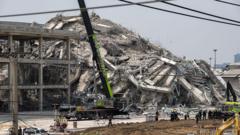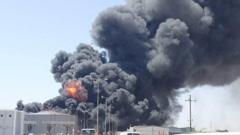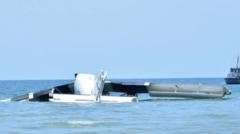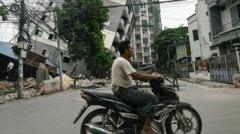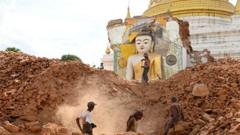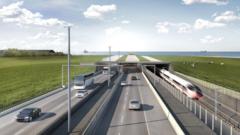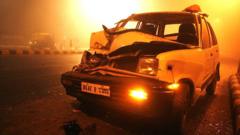New investigations emerge as one building collapses in the quake's aftermath, raising concerns about construction quality and safety protocols.
# Earthquake Strikes Myanmar and Thailand: Focus Turns to Building Collapse in Bangkok

# Earthquake Strikes Myanmar and Thailand: Focus Turns to Building Collapse in Bangkok
A devastating earthquake has impacted Myanmar and Thailand, highlighting construction issues in Bangkok.
In the wake of a severe earthquake that struck Myanmar and reached into Thailand, attention has turned to a significant incident in Bangkok, where a high-rise building collapsed, resulting in at least 15 deaths and numerous missing persons. This tragedy has sparked investigations into the role of the construction practices employed by a Chinese state-owned developer, China Railway 10th Engineering Group, involved in the project.
Reports from construction workers have revealed that in a push for cost-saving, low-quality materials were used, including substandard steel bars sourced from a local factory previously shut down for regulatory infractions. The building’s design has also come under scrutiny, with claims that the structural columns were narrower than industry standards typically would permit.
Thai officials are currently analyzing debris from the recent collapse, aiming to establish a comprehensive understanding of the construction faults that led to this dire outcome. This incident serves as a critical reminder of the repercussions of compromised building standards and raises questions about oversight on foreign developmental contracts within Thailand.
As recovery efforts continue, the involvement of large international construction firms highlights broader concerns regarding compliance with safety regulations, especially in regions experiencing rapid development. In light of these events, stakeholders are urged to prioritize accountability within the construction sector to prevent future tragedies from occurring.
Reports from construction workers have revealed that in a push for cost-saving, low-quality materials were used, including substandard steel bars sourced from a local factory previously shut down for regulatory infractions. The building’s design has also come under scrutiny, with claims that the structural columns were narrower than industry standards typically would permit.
Thai officials are currently analyzing debris from the recent collapse, aiming to establish a comprehensive understanding of the construction faults that led to this dire outcome. This incident serves as a critical reminder of the repercussions of compromised building standards and raises questions about oversight on foreign developmental contracts within Thailand.
As recovery efforts continue, the involvement of large international construction firms highlights broader concerns regarding compliance with safety regulations, especially in regions experiencing rapid development. In light of these events, stakeholders are urged to prioritize accountability within the construction sector to prevent future tragedies from occurring.



